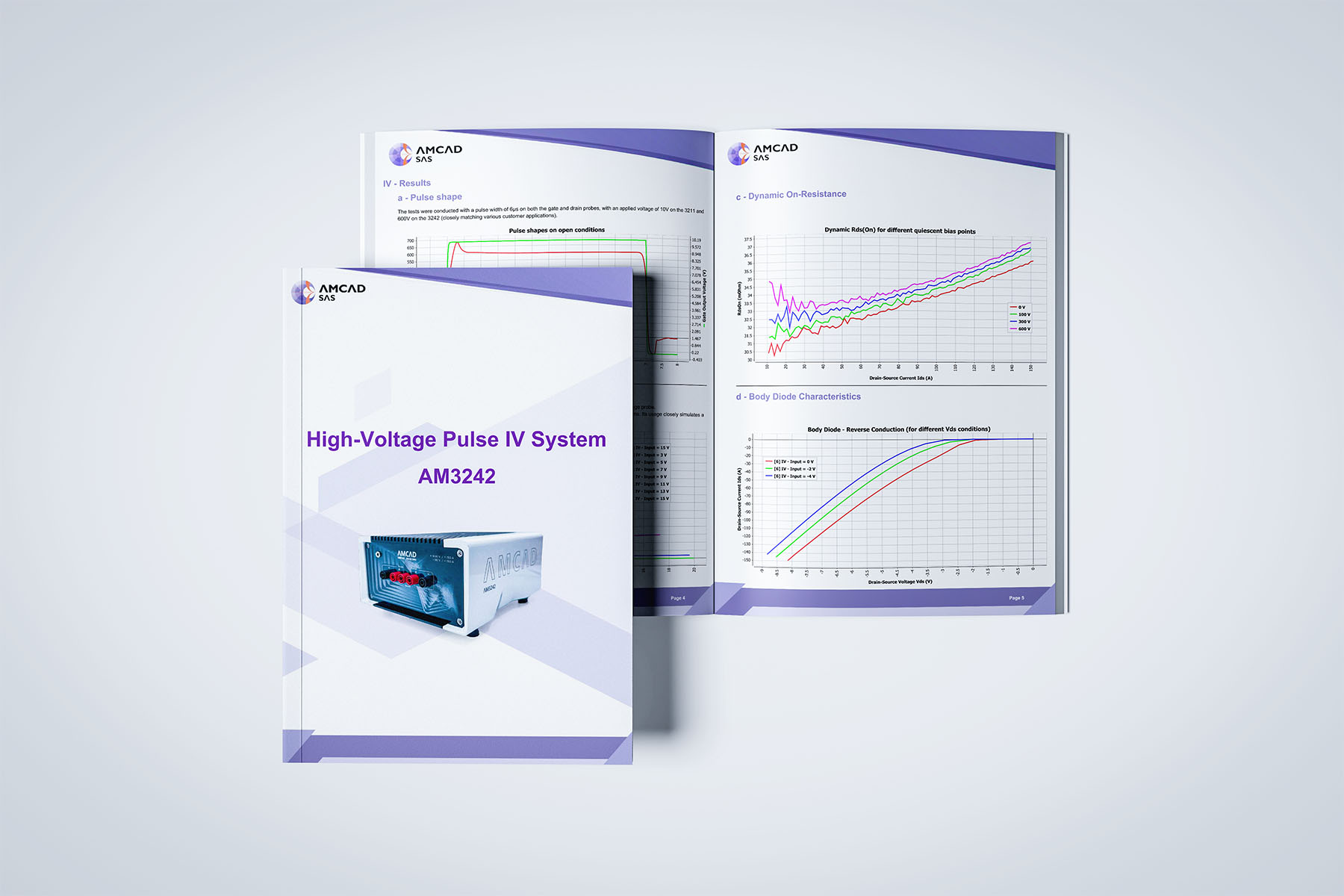
The problem with DC sweeps
When testing power transistors, even a short DC sweep can cause the device to heat up quickly. That heat shifts the electrical behavior—especially on key parameters like on-resistance (RDS(on)).
As a result, you’re not measuring the real performance of the component anymore. You’re measuring the heated version of it.
A simple fix: pulsed I–V testing
Instead of applying a continuous signal, the AM3242 SMU delivers very short voltage as low as1 µs.
This allows you to:
- Measure the I–V curve before the junction heats up
- Get more accurate values of RDS(on), even at high current
- Characterize the body diode under static reverse bias
All without special cooling or complex setup.
The AM3242 in your lab
The AM3242 is designed for pulsed I–V testing on power devices such as Si, SiC or GaN MOSFETs. It connects directly to the AM3200 platform and runs through IVCAD software.
Key specs include:
- Voltage range: up to +1500 V
- Current range: up to ±150 A
- Pulse width: as low as 1 µs
- High-resolution measurements, repeatable results
Depending on your setup and test goals, the SMU can operate across a wide range of conditions, without requiring external cooling.
What’s in the application note
We’ve prepared a short guide that covers:
- The full test setup (including fixture, probes, and connections)
- Example I–V curves captured using pulsed mode
- On-resistance evolution vs current
- Reverse conduction measurement at different gate voltages
- Practical tips for setup and reproducibility
It’s designed for engineers who want fast, clean, reliable data—without unnecessary complexity.


.png)

